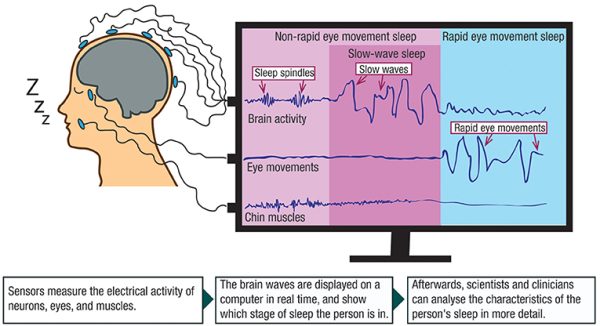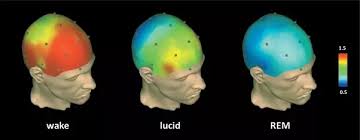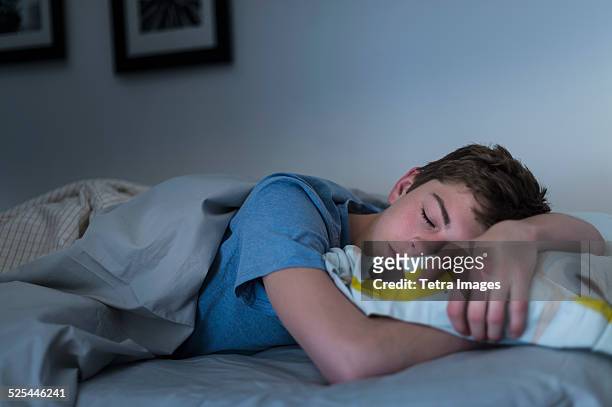Sleep is one of the most vulnerable conditions someone can find himself. Like most living species, humans need to sleep to recharge, grow, and have energy throughout the day. It is simple science. Sleep= better life.
However, the concept of sleep can be confusing to the human brain since it’s 8-10 hours where we are completely unconscious and not in control of our actions. The brain is the strongest muscle as it rules the most powerful factors in life: thoughts, emotions, actions, and more. Some people sleep walk, sleep talk, and even sleep kick. There are also sleep conditions like insomnia, paralysis, and lucid dreaming. The question is, why does this happen, and can we control it?
Most sleeping conditions are related directly towards mental health and the state one is in right before going to bed. When something is worrying you or stressing you out, the brain connects those thoughts to your subconscious where it will eventually appear in your dreams. For millions of people worldwide, getting good restful sleep can be a challenge because of sleep disorders. These disorders encompass a range of conditions that disrupt the normal patterns of sleep, leading to difficulties falling asleep, staying asleep, or experiencing restorative rest.
“I rarely get more than six hours of sleep. I wake up every couple hours and then I can’t go back to sleep. I’ve suffered with insomnia my whole life which is why I usually get prescribed melatonin,” said senior Emilie Reyes.
The repercussions of sleep deprivation extend far beyond mere fatigue, encompassing cognitive impairment, mood disturbances, impaired performance, and heightened risk for chronic health conditions. Some mental health problems that can cause them include anxiety, depression, bipolar disorder, and other psychiatric conditions which frequently co-occur with sleep disturbances. The intricate relationship between mental health and sleep underscores the bidirectional nature of these disorders, with each exacerbating the other, as well as genetics, lifestyle choices, nutrition, exposure to technology, etc.

Loss of sleep can cause impaired cognitive function, memory loss, and difficulty with decision-making. It can also bring irritability , anxiety, and depression.
“I had to start sleeping with a smart watch to track my habits or fall asleep with ocean sounds because it’s the only way I won’t move like crazy in my sleep,” said junior Ana Leanez.
Here are some of the most common sleep conditions.
Insomnia
Insomnia is a common sleep disorder characterized by difficulty falling asleep or staying asleep. It often leads to fatigue, mood swings, eye bags, and difficulty focusing. Individuals with insomnia often experience heightened arousal and alertness, even when attempting to sleep. Brain imaging studies have shown increased activity in regions associated with wakefulness and attention, such as the prefrontal cortex and anterior cingulate cortex. This hyperarousal state can interfere with the brain’s ability to transition into the relaxed state conducive to sleep.

Lucid Dreaming
Lucid dreaming is a phenomenon in which individuals become aware that they are dreaming while the dream is still occurring. This allows people to be in some control of their dreams and realize they are stuck in a fantasy. Lucid dreamers can engage in activities such as flying, interacting with dream characters, and exploring their imagination. This experience often enhances cognitive functioning during sleep and provides opportunities for creative exploration and self-discovery. While rare, lucid dreamers get low rest because their brain is still functioning during sleep. There is a lot of brain activity during lucid dreaming which sometimes show advanced cognitive thinking and signs of hyper awareness in the real world. During this, the prefrontal cortex, the part of the brain linked with function, self-awareness, and volitional control, shows heightened activity. Regions of the brain involved in attention, working memory, and spatial awareness, such as the frontal and parietal lobes, also demonstrate increased activity during lucid dreaming. The thalamus, a brain structure involved in sensory processing and consciousness, exhibits reduced activity during lucid dreaming compared to non-lucid dreaming. This decrease in thalamic activity may contribute to the altered state of consciousness characteristic of lucid dreaming.
“Every couple of days I’ll wake up and not be able to move my body, like if I was nailed down to my bed. I’ll feel like I’m awake but I can only move my eyes. And then sometimes I’ll see a dark shadow in the corner of my room moving towards me and I feel like I can’t breathe until I snap out of it,” said senior Mia Huidobro.
Sleep Paralysis
Sleep paralysis is a temporary inability to move or speak that occurs during the transition between wakefulness and sleep, or vice versa. It is often accompanied by hallucinations and a sense of pressure on the chest. During sleep paralysis, individuals may experience vivid and often frightening hallucinations, leading to feelings of terror or panic. While the exact mechanisms underlying sleep paralysis are not fully understood, it is believed to involve disruptions in the normal sleep-wake cycle and the regulation of REM (rapid eye movement) sleep.
During sleep paralysis, the brain undergoes unique patterns of activity that correspond to the individual’s altered state of consciousness. The limbic system, which plays a key role in emotion processing and regulation, may exhibit heightened activity during sleep paralysis. This increased activation may contribute to the intense emotional experiences often associated with sleep paralysis, including feelings of fear, panic, or anxiety. It is also characterized by temporary muscle atonia, or paralysis of voluntary muscles, which prevents individuals from moving or speaking. This paralysis is believed to result from the suppression of motor cortex activity, particularly in regions responsible for initiating voluntary movements. These hallucinations may arise from alterations in sensory processing within the brain, leading to the perception of vivid and often surreal experiences.








